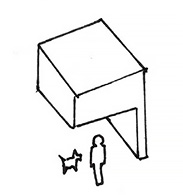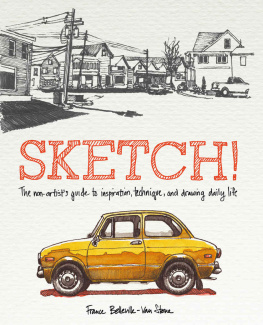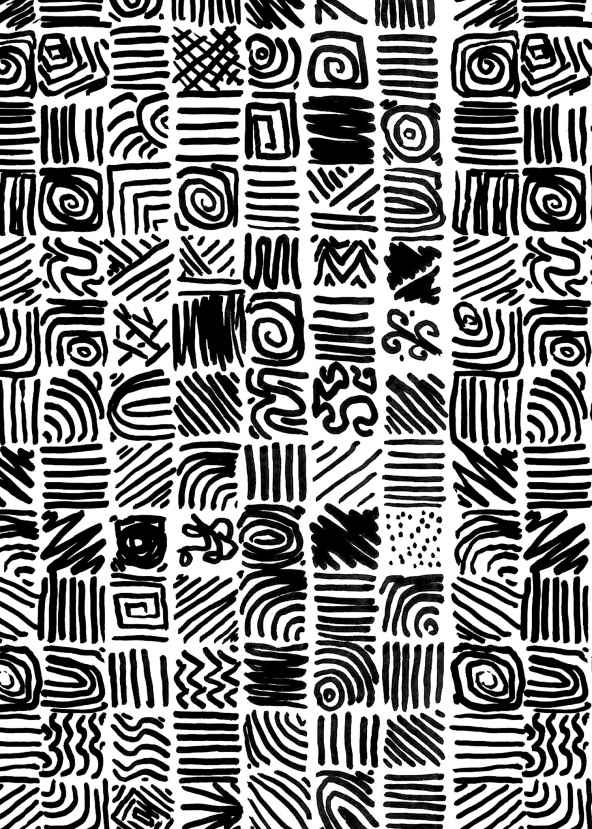Amelie Sarrazin, Aleksandra Micek, Taylor Reese, Dan Brown, Daniel Cook, Kate Rutter, Eva-Lotta Lamm, Matthew Magain, Sunni Brown, Cristina Negrut, Daryl Meier Fahrni, Marc Bourguignon, Laura Klein, David Gray, Melissa Kim, Jherin Miller, Mike Rohde, Brian Gulassa, Andrew Reid, Rolf Faste, Raph Koster, Stone Librande, Robin Hunicke, Alicia Loring, Erin Malone, Stephen P. Anderson, Giorgia Lupi, Alex Osterwalder, Noelle Stransky, James Young, and Dan Roam and examples from scientists, architects, chefs, architects, best-selling authors and more....
Introduction
While I was writing I kept thinking, Who am I to make this book?
I studied painting in Art School and went on to have a great career in fine dining. Frustrated and footsore, I taught myself HTML and got into this new internet thing.

That worked out pretty well.
My parents used to tease me about how I was (not) using my degree. Over the years, Ive realized they were wrong. There are so many things I learned in art school I use every day. For example, I learned grit, a.k.a. How to keep making art after a critique had you weeping so hard you puked.

Drawing was one of art schools greatest gifts. When I was at Kansas City Art Institute, drawing was taught as a kind of Zen practice. You were taught that your idea of a face or a house got in the way of truly seeing it. You needed to stop thinking about what it was and relax into seeing what really was there.
For example, on the left is an idea of a house, the kind a kid draws. On the right is a house in my neighborhood. Houses rarely look like the one on the left.
When I started making websites in the 90s, I found plenty of use for drawing. I made concept models, site maps, wireframes, and more! But I made them with software rather than with a pen and paper.
Much later, I realized that I was better off if I drew my ideas. I could explore a dozen ideas in the time it took me to open my software.
I drew at every company I worked with, from Yahoo to The New York Times. At tech companies, everyone draws on the whiteboard. When you make complex things, words eventually fail.
My sketches were pretty horrible. I knew how to draw things in the world, but not the things in my brain. I decided to learn how to draw ideas.

Me, Teaching, by Amelie, Age 8
I could have kept drawing badly you can make bad pictures and communicate a lot! But I wondered... if bad pictures communicated a lot, what could good pictures do? I filled a dozen sketchbooks exploring and practicing. As I became fluent in visual communication, it was like learning a new language. I could communicate complex ideas clearly and simply.

Index card sketches by Aleksandra Micek, student at California College of the Arts
When I became a professor, I taught my students how to sketch ideas and model systems. One day a student came up to me and asked, Is there a book on this kind of drawing? All I could recommend was Ed Emberleys Make a World. Its a kids book.
Where are the simple books on how to draw for grown-ups? Most books that teach drawing are intimidating. They teach you how to draw buildings or race cars or realistic people, but thats not what non-designers need to draw every day.
I decided to make a book for working professionals that wouldnt scare anyone away and would teach you how to draw the kinds of things you need to think through product and business decisions.
Here we are! Lets draw!

Drawing, Drafting, and Doodling
People talk about drawing and sketching as if its all the same kind of thing. But when I tried to draw my ideas, I struggled, even though I had studied painting.
I think there are three kinds of drawing (at least!).
Life Drawing
The art of looking at the world and shutting up your verbal brain so you can draw what you see. The best book for this is Betty Edwards Drawing on the Right Side of the Brain.

Technically, an extinct bird drawing.
Drafting
Used by architects and industrial designers, you use geometry and logic to render things as they eventually will appear in the world.

Idea Sketching (Also Called Doodling)
All about getting the stuff in your head out on the paper where you can see, evaluate, and share it.



























